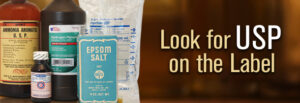Regulatory Compliance and Pharmaceutical Labels
The pharmaceutical industry is regulated by government agencies that set guidelines for the safety of medicines. These laws are passed to protect patients from drugs that are unsafe or ineffective. They also allow the pharma industry to develop new medicines that will be beneficial to patients.
Regulatory requirements for drug products vary from country to country. This makes it difficult for a manufacturer to maintain compliance across all locations and regions.

To ensure regulatory compliance, Pharmaceutical Labels companies need to use a regulatory compliance software solution that can help them manage the various elements of their drug labeling process. The solution can help them streamline the process, from designing and approving labels to tracking changes that occur to the drug.
Regulatory Compliance and Pharmaceutical Labels: What You Need to Know
A key part of ensuring regulatory compliance is implementing an automated labeling system. Automating the labeling process enables pharmaceutical companies to reduce manual processes, eliminate errors and improve their efficiency.
In 2022, we will see life science firms continue to embrace automation to support their regulatory labeling processes. This will enable them to more quickly pivot as they respond to shifting market conditions.
This year, we will also see more life science companies adopt electronic standards for the capture and submission of regulatory information. Moving to an electronic system will provide firms greater agility to adapt to market changes and avoid costly penalties.
The pharmaceutical labeling process is important for the health and well-being of patients. Having an effective and up-to-date label helps ensure that patients can make informed decisions about their medications. In addition, it can help prevent drug interactions and other problems that may arise from incorrect drug use.
FDA guidelines for prescription drugs require that the labeling contain specific information, such as a warning, patient counseling, and a boxed warning. The warning should include details about how to safely use the drug and signs that may indicate a dangerous reaction.
These labels must be printed in a large enough font size to read without difficulty. The FDA lists specific fonts and formatting rules that should be used to make the labels easier to read.
The labels of over-the-counter (OTC) drugs, which do not require a prescription, are also required to comply with FDA regulations. This requires the labels to contain certain information about the medicine and the company that manufactures it. The labeling of OTC products should include the name of the manufacturer, product name, and the ingredients that make up the medicine.
Several factors can cause drug labeling to fail to meet regulatory compliance standards. These factors include a lack of proper labeling, a failure to update existing labels and other issues related to quality and safety.
Labeling of medicines is a very complex process that can pose a number of challenges for companies. The main challenge lies in ensuring that the labels are up-to-date and accurate.
Regulatory requirements for medicines are often strict and can be overwhelming. Having a labeling system that can help you overcome these challenges can improve the safety and quality of your medicines. The best way to do this is to partner with a regulatory compliance firm that can help you stay on top of all regulations and guidelines.